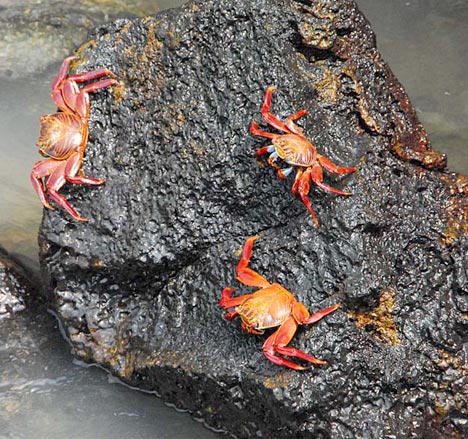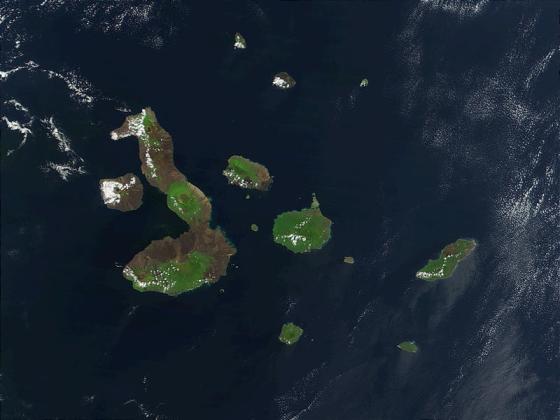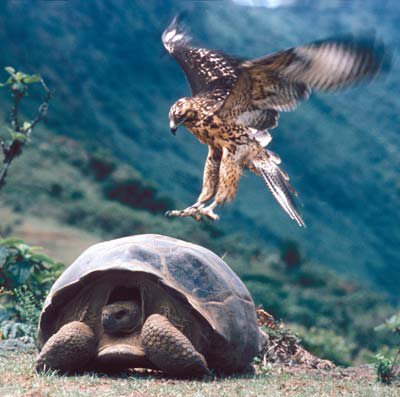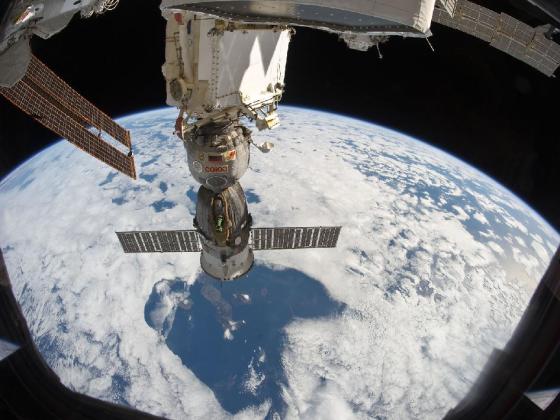A Letter to Charles Darwin
By Mohezin Tejani

Dear Charles,
Back in geological time, five million years ago when the sea bed of the crystal blue Pacific thrust its mighty force upwards concocting new volcanoes now called the Galapagos Islands, who would have imagined that this archipelago would become the Nature center of our universe in the 21st century? You did, Charles.
On behalf of all the world’s citizens, I shower profuse gratitude on you for making that Nature cruise on the Beagle back in 1835 to this pristine paradise, some six hundred miles west of Ecuador. Thank you for defying those status-quo conservatives who continue to use God as a Machiavellian tool to justify their subjugation of the masses in the name of religion and heavenly life after death. Thank you for having the brains to unearth how Nature, the only true source of our universe, really works. The British Royal Geographical Society in those days must have thought of you as a mad heretic scientist to venture to this unexplored secret of our globe.
I would also like to extend heartfelt appreciation to you and the Ecuadorian custodians for having the foresight to turn this archipelago into a national park, where humans can only tread on specified trails with a certified guide and are prohibited from sleeping on twelve of the fourteen islands altogether. Who knows what commercial human devastation would be wreaked upon this world wonder if both of you did not have this far reaching foresight back then?

A fringe of brilliant green vegetation encircles the crater of the volcano in the center of Isla Fernandina, one of the Galapagos Islands, in this Advanced Spaceborne Thermal Emission and Reflection Radiometer (ASTER) image. In this image, streamers of hardened lava in various shades of purple spread downward from the summit across the island toward the ocean. The different colors may represent lava flows of different ages and compositions. Credit: NASA/GSFC/MITI/ERSDAC/JAROS, and U.S./Japan ASTER Science Team.
More than a hundred years later, I am fortunate enough to have just explored these magical islands to verify something that I instinctively believed since growing up in Nature-lush Africa. Let me elaborate for you what I saw there…
Avoiding the commercial expensive cruise ships for the wealthy, I boarded a trawler and embarked on a ten-day tour of the islands with seven other travelers and our ship captain, Carlos, a local seafaring navigator of Santa Cruz, who turned out to be a very hospital fellow with a passion for ecology. On our very first day, at eight o’clock in the morning, grey-white dolphins in groups of six or more appeared on either side of our boat to wish us a good morning. What is even more amazing is that for every single one of those ten days, they reappeared by our side at 8 a.m. on the dot, as if they were our own private escort into the islands, making sure that we were headed in the right direction away from danger. Or it may be that their true motivation was to ensure that we wouldn’t harm their secret lair like the pirates and whalers once did.

Crabs add color to the black lava backdrop of Galapagos' beaches. Credit: NASA Earth Observatory Field Blog.
During trips from island to island, Carlos, with nothing but a pair of leather gloves and a snorkel, would dive into coves to fish out fresh lobsters or tuna for our nightly dinners. Food for survival. A gift from Nature.
At Sullivan Bay on Bartolome Island at an inlet where macho sea lions lay perched, basking on the rocks, we were doing aerobic dances with their pups swimming all around us. Carlos pulled us aside warning us not to get too close just in case the lords-of-the-manor males got a little too anxious for their pups’ safety. Every once in a while, one of the males would bellow out a loud screeching groan—just to remind us that he and the others were watching our every move.
The ten days—a photographer’s Mecca in my mind—come flashing back…

This true-color image of the Galapagos Islands was acquired on March 12, 2002, by the Moderate-resolution Imaging Spectroradiometer (MODIS), flying aboard NASA's Terra satellite. The Galapagos Islands, which are part of Ecuador, sit in the Pacific Ocean about 1000 km (620 miles) west of South America. As the three craters on the largest island (Isabela Island) suggest, the archipelago was created by volcanic eruptions, which took place millions of years ago. Photo credit: Jacques Descloitres, MODIS Land Rapid Response Team, NASA/GSFC.

Bright yellow/golden—and according to Darwin, "lazy"—land iguanas. Photo: NASA Earthobservatory Blog "From the Field."
The joy of peering into an iguana’s eyes, its pink tongue slithering in and out of its mouth; the sensation of stroking the back of a Darwin finch sitting for several minutes in the palm of my hand before flying off; the thrill of riding a six-hundred pound Galapagos turtle poking its snake-like head out every now and then to be sure we were on course; the pleasure of waddling with penguins by an island shore as they moved closer to the setting sun shooting its orange green arrows across the Pacific sky; the sweat of climbing an ancient lava flow up the caldera crescent to see a panoramic view of the archipelago with sea turtles and nurse sharks playing with each other in the waves below; the titillation of seeing a male and female blue-footed boobie perform their mating dance, inches from my feet on a narrow dusty trail.
I understand clearly now, Charles, why you wrote what you wrote.

Docile and enormous, tortoises are the iconic Galapagos creature. Photo: Submitted by Mohezin Tejani.
Seeing the amphibian iguanas, the sea lions, and even the Galapagos penguins—all just as much at home on land as in the sea—I am able to visualize Nature’s long-term vision for the adaptation of its bountiful creatures from water to soil.
Though a few other explorers preceded you to these islands, it was your treatise of natural evolution (never just a theory) that educated the geologically illiterate on how humans evolved from chimps to gorillas to homo erectus to homo sapiens to homo locos of today. It was your words in On the Origin of Species that brought intellectual shame upon the thinkers who cajoled our world into believing the myths of racism—that black people were genetically inferior to the white-skinned ones. It was your courage that eventually exposed the malignant lie that undergirded the justification for the African slave trade. That 400-year-old lie has finally been laid to rest now that 20th century archeologists have unearthed the skulls and bones of tool-making humans in Tanzania (as well as Indonesia and China), evidence of the earliest signs of evolution from mammal to human.
Thank you my dear pioneer friend. You can sleep soundly tonight on Nature’s silk bed.
March 1978
~~~~~~~~~~~~~~
Post Script

October 28, 2010. At 220 miles above Earth, the unattended Soyuz TMA-19 spacecraft, docked to the International Space Station, almost appears to be a giant telescope focusing through a break in the clouds upon several islands in the Galapagos chain. Isabela is the most easily recognizable island among this chain in the Pacific Ocean. Credit: Nasa Photo.
A hundred and fifty years later, my dear departed friend, Charles, the eternal fight of Nature versus machinery goes on undeterred. Despite Jacque Cousteau’s warnings of impending disasters in the oceans and Al Gore’s inconvenient truth of the polar ice caps melting, our planet—now teeming with seven billion people, a third of them unable to find a proper meal for the day—muddles its way through a new millennium. Humans continue warring with each other over a tiny piece of land, excavating black gold to oil their machines, and using carbon credits to rationalize the destruction of our atmosphere.
In fact, a select few (thankfully still very much a minority), calling themselves the Intelligent Design Creationists, now even have the audacity to refute your treatise with claims that the Big Bang theory and the natural selection of species is but hogwash dished out by heretic scientists. Convinced that humans, as masters of the Universe, will always rule at the top of the food chain, they wreak havoc on Earth through fear, using land mines in the soil, bombs dropped from the sky by unmanned drone planes, and chemical gases sprayed from helicopters or released from missile warheads.
Fear not Charles, they are learning their lessons the hard way. Nature, unfolding in its sweet slow geological time, proves them wrong again and again—with tsunamis in Southeast Asia and Japan, hurricanes and tornados in North America, earthquakes in China and the Himalayas, typhoons in the Philippines, El Nino in the Oceans, drought in the Sahel, famine in Somalia, floods in Europe and Bangladesh, and volcanic eruptions in Hawaii, Peru, and Indonesia.
For millennia now, Nature has always found ways to restructure that karmic balance between the Homo sapiens species and the ecological cycle of Mother Earth.
She will never let us down, will she, Charles?
November 2011
Date posted: November 19, 2011
Copyright: M. Tejani, November 2011
_____________
 About the writer: Mohezin Tejani developed a passion for books and travels during his early life in Africa. Born in Tanzania to Ismaili parents of Indian ancestry, he grew up in Uganda where he spent his childhood and early adult life. Then in 1972, along with 80,000 other fellow Asians, he was expelled during Idi Amin’s reign of terror, and first fled to England and then to America of the late sixties and early seventies. He spent the next four decades on the road as a political refugee and a humanitarian aid worker. The above piece is part of a collection of essays, poems, and letters written over four decades of travel across five continents. Tejani’s latest book Thank You Idi Amin: A Memoir of the Asian Exodus was published by Global Vision Press and has received critical acclaim. Excerpts and links to his other writings can be found on his website: www.motejani.com.
About the writer: Mohezin Tejani developed a passion for books and travels during his early life in Africa. Born in Tanzania to Ismaili parents of Indian ancestry, he grew up in Uganda where he spent his childhood and early adult life. Then in 1972, along with 80,000 other fellow Asians, he was expelled during Idi Amin’s reign of terror, and first fled to England and then to America of the late sixties and early seventies. He spent the next four decades on the road as a political refugee and a humanitarian aid worker. The above piece is part of a collection of essays, poems, and letters written over four decades of travel across five continents. Tejani’s latest book Thank You Idi Amin: A Memoir of the Asian Exodus was published by Global Vision Press and has received critical acclaim. Excerpts and links to his other writings can be found on his website: www.motejani.com.
Tejani’s other essays on this website:
_____________
Share this article with others via the share option below. Please visit the Simerg Home page for links to articles posted most recently. For links to articles posted on this Web site since its launch in March 2009, please click What’s New. Sign-up for blog subscription at top right of this page.
We welcome feedback/letters from our readers on the essay. Please use the LEAVE A REPLY box which appears below. Your feedback may be edited for length and brevity, and is subject to moderation. We are unable to acknowledge unpublished letters.

I feel compelled to lodge my disagreement with the various comments against Intelligent Design (ID). It is clear the comments are made without a full understanding of ID and the latest discoveries in molecular biology.
I strongly recommend the following two books — especially the second. Since modern genetics can now actually calculate the rate of mutation, and therefore its ability to drive change, it is now possible to actually quantify random mutation’s potential to “evolve” life and the calculations show that random mutation cannot account for much evolutionarywise. In other words, we can now come to good quantifiable limits as to the “edge of evolution” — hence the name of the second book.
The first book introduces the concept of irreducible complexity, which pretty much eliminates evolution as a theory to explain origins. The second book picks up from the first, and drives nail after nail into the coffin of evolution as the supposed driving mechanism for life’s variety. Although evolution has its place in certain situations, its influence is very, very limited because of the limits of what random mutations can accomplish.
Darwin’s Black Box: The Biochemical Challenge to Evolution by Michael J. Behe
The Edge of Evolution: The Search for the Limits of Darwinism by Michael J. Behe (2007)
For a very understandable introduction to some of the points raised in “Darwin’s Black Box”, I recommend this video:
Unlocking the mystery of life.
Leaving aside that Darwin himself admitted — although it is never mentioned — that if irreducibly complex systems were found in nature then his theory fails for those systems, not only have no end of incredibly irreducibly complex systems been found, but, thanks to the relentless march of science, the limits of random mutation can now also be quantified and they put a firm limit as to what undirected, random mutation based “evolution” can and cannot do. What has been uncovered in the last 15 years especially (since Darwin’s Black Box was written in 1996) about the inner workings of life is nothing short of true wonder. Synergistic systems of complexity, far, far beyond what was even imagined just two decades ago have been discovered and render random mutation as an impossible (scientifically) explanation.
As the Aga Khan has so eloquently said, many times, knowledge is not static but changing and we must not “became prisoners of dogma”:
“A wise observer once said, it’s not so much what we don’t know that hurts us, but also all those things that we are sure we know — but which are just not so.”
His Highness the Aga Khan’s 2007 Aga Khan Academy, Mombasa, Residential Campus Foundation Stone Ceremony address (Mombasa, Kenya)
“[K]nowledge is constantly changing, must ever be challenged and extended.”
His Highness the Aga Khan’s 1989 Address at the Convocation Ceremony of Graduates from the Faculty of Health Sciences School of Medicine, Aga Khan University (Karachi, Pakistan)
“[We must] constantly review and revise and renew what we *think* we know.”
His Highness the Aga Khan’s 2006 Aga Khan University Convocation Ceremony address (Karachi, Pakistan)
“New forms of knowledge are resisted because they change society …”
His Highness the Aga Khan’s 2008 Vancouver Sun Interview, Don Cayo (Toronto, Canada)
“Professional standards and assumptions can provide a form of intolerance, pride and myopia as intractable as the rigidities of traditional societies.”
His Highness the Aga Khan’s 1987 McMaster University Convocation Ceremony address (Hamilton, Ontario, Canada)
Sources for the above quotes (and more on the same theme):
His Highness the Aga Khan on thinking independently and the search for new knowledge — the spirit of adventure
http://www.facebook.com/notes/nanowisdoms-archive-of-imamat-speeches-interviews-and-writings/excerpts/500818353269687
Thanks for this wonderful piece, and sharing with us a lesson in science!
Wonderful!
Interesting read, although I am confused how you reconcile the by now well proven theory of evolution with the (far from proven) idea of God, specifically the Abrahamic God. I’m not sure the two are reconcilable. I am greatly heartened to see the recognition of science on a faith based website, but in the end, an honest appreciation of science leaves little room for an omniscient, omnipotent, personal and benevolent god who listens to prayers, sends prophets and performs random miracles for the exclusive, albeit obscure, benefit of mankind.
Evolution does not, in fact, prove the existence of God but instead highlights the lack of scientific thinking in theological perspectives. History has shown that science’s greatest enemy is religion, as you touch on when you mention the Creationists of this world. Islam at worst does nothing to dispel Creationism and at best, begs some recognition of Creationism’s fraudulent cousin of compromise called Intelligent Design. An honest and objective look at religion (in particular Judaism, Christianity and Islam) shows their profound frailty of logic and reflects their origins around the superstitious campfires of patriarchical tribes of ancient Arabia – as opposed to the ‘mind’ of an all powerful creator. When you write such articles and present them on such websites, you invite discourse on the topic of science vs religion. Again, I ask, how do you reconcile the obvious holes in Islamic theology with the facts of science?
I was rather surprised by your comment about science being recognized on this website which you deem to be a faith based site. It is precisely because of the compatibility betwen science and faith in Islam that numerous readings and quotes on this blog have highlighted or emphasized the importance Islam places on knowledge in all its forms, including scientific advancements and new discoveries. This has been the case since the advent of Islam from the time of the Prophet Muhammad (may peace be upon him) and the Quranic revelation. While not wishing to go into a debate of science vs. religion, because I don’t believe there is a conflict at least in Islam, I might take the opportunity to quote His Highness the Aga Khan on Islam’s central message about God and His Creation. When asked, “How would you comment on the notion popularised by Western critics that scientific and technological progress is incompatible with the practice of Islam?”, the Ismaili Imam replied:
“I think that’s one of the most offensive thing that can be said about Islam and I take issue with it in every way. In the first place, to say that science in the modern age is incompatible is the same as saying that Islam is the faith of the past and that is totally unacceptable. In the second place, Islam’s message contains a central theme which is the total power of Allah and therefore my conviction is that the discoveries which the human mind can make are really simply a minute perception of Allah’s creation and I know no scientist in any domain who has been able to answer the ultimate question. So. from my point of view, Islam is a faith which cannot be relegated to the past. The message of Islam with regard to Allah’s power and His creation is essential to our faith. We have every day evidence of that and we must be thankful.”
Reference for the above: http://www.nanowisdoms.org/nwblog/2799/
Also, to supplement the above I include the following extensive remarks from a speech His Highness made at the Inauguration Ceremony of the Aga Khan University, Karachi, on November 11 1985:
QUOTE
“Whilst open to all, the Aga Khan University is to be an Islamic Institution. It will draw upon the great historical tradition of Muslim’s learning, the heritage of such philosophers and scientists as ar-Razi and al-Biruni, Ibn Sina and Ibn Rushd. In the true spirit of this tradition, it will also address the higher educational needs of Muslims as they face this new 15th century of the Hijra. This inaugural day is therefore an appropriate moment to reflect upon the nature of those needs and on what the role of this University should be, situated as it is an Islamic country of world importance, at the heart of the Ummah.
“The relationship between the intellect of man and Faith has always been of fundamental importance to Muslims. How can a modern University respect and re-enforce that relationship? The divine intellect Akl-e-kul’, both transcends and informs the human intellect. It is this intellect which enables man to strive towards two aims dedicated by the Faith: that he should reflect upon the environment Allah has given and that he should know himself. It is the light of intellect which distinguishes the complete human being from the human animal and developing that intellect requires free enquiry. The man of Faith who fails to pursue intellectual search is likely to have only a limited comprehension of Allah’s creation. Indeed, it is man’s intellect that enables him to expand his vision of that creation.
“Eleven hundred years ago, Al-Kindi wrote: ‘No one is diminished by the truth, rather does the truth ennoble all.’ I quote that great Muslim scientist and thinker because his words are as relevant to higher education today as they were during the first flowering of Islamic civilization. If the frontiers of Physics are changing, it is due to scientists discovering more and more about the universe, even though they will never be able to probe its totality, since Allah’s creation is limitless and continues.
“I apprehend that in certain educational institutions respect for tradition has restricted academic study to the accomplishment of the past. However, our Faith has never been restricted to one place or time. Ever since its revelation the fundamental concepts of Islam have been its universality and the fact that this is the last revelation, constantly valid, and not petrified into one period of man’s history or confined to one area of the world. The Holy Qu’ran’s encouragement to study nature and the physical world around us gave the original impetus to scientific enquiry among Muslims. Exchanges of knowledge between institutions and nations and the widening of man’s intellectual horizons are essentially Islamic concepts. The Faith urges freedom of intellectual enquiry and this freedom does not mean that knowledge will lose its spiritual dimension. That dimension is indeed itself a field for intellectual enquiry. I can not illustrate this interdependence of spiritual inspiration and learning better than by recounting a dialogue between Ibn Sina, the philosopher, and Abu said Abul-Khayr, the Sufi mystic. Ibn Sina remarked, ‘Whatever I know, he sees’. To which Abu Said replied, ‘Whatever I see, he knows’.”
UNQUOTE
Thus, these excerpts by a Muslim religious leader verify the compatibility of science with religion and why this blog will continue to provide diverse readings on Islam and science. With regard to your other reflections on the subject, I would defer the discussion to the author of the essay as well as invite you to read my interview with Professor Arif Babul, a Muslim astrophysicist, where the issue about science and religion were raised including the theme of Intelligent Design. It is in multiple parts. Part I at https://simerg.com/about/voices-brilliant-astrophysicist-arif-babul-in-conversation-with-simerg/. I would also invite you to read Babul’s excellent condensed piece about the interplay of science and religion by clicking https://simerg.files.wordpress.com/2009/06/babul-excerpt-knowing-the-universe.pdf.
Thank you
Malik
Thank you for your thought provoking comments. There are two themes running here that I see. One is the concern about our ecosystems being destroyed for petty, selfish reasons and this is a grave concern for the entire mankind and we must do all we can to preserve what Nature (God) has created, it is our proof positive that complex systems CAN evolve from simple elements, and we must preserve this valuable evidence besides enjoying the inherent beauty. The second theme which I believe was part of your original writeup was the mind bending conclusions that Darwin made us aware of that Natural Selection and Random Variation could indeed, without the need for a higher authority, create the beautiful and complex world around us and he thus laid to rest once and for all the need to proclaim the presence of a higher authority as the church had claimed here unto. That is a very important message that I think we don’t pay much attention to. This still does not have to be a conflict. Like you rightly point out you choose to have a faith and belief independent of any scientific issue and the impact of Darwin’s work does not make our ideas about our own personal religion any less significant to us. But we must at the same time understand that there is no truth to the mistaken idea that the evolution of such complex organisms and organs (such as the human eye) requires Intelligent Design.
On a different note, to me there is no such thing as “Nature” the way we humanize it as though it has a mind and intelligence. It is just an automatic response that occurs when living creatures are threatened. Its the survival instinct that helps create the ‘damage control’ and indeed it is a powerful response that has helped to preserve eco-systems to survive natural and man made disasters but I feel its important to recognize these systems at the level that operate and not to humanize them by making them appear more than they really are.
Best regards
And a one of a kind writer is born in “TEJANI” ancestry.
Good work, Mohezin
Those of (US) who can make it GALAPAGOS before we expire – would love to have you as a guide.
You, why not prepare/challenge “Tejani Clan” and the “Spouses in-law” to prepare for a future trip to G. Now that is a thought.
Great inviting adventurous piece!
Thank you for your comments on my Darwin piece. Always gratifying to see my writing invoke varied thoughts and perspectives.
For me, belief in God, no matter the background one comes from is a personal decision based on one’s own faith and belief. For me, Nature with all its ying-yang power of beauty and destruction is neither any one God nor a creator of our planet. Yet we have to recognize that by appreciating and respecting Nature’s ability to adapt and re-adapt to evolving eco systems – as humans continue to intervene in that eco-system for motives of profit, greed and yes survival too – as a global force that necessitates that we learn to live in harmony with Nature, and continue to be thankful for and bless this natural phenomena that maximizes “damage control” against war, violence and destruction in ways that we are only beginning to fathom in this 21st century.
I commiserate with Karim that the road through Serengeti (another world wonder) will bring untold disasters if the people in power do not find ways to mitigate the commercial consequences of that construction.
Mohezin.
And, here in Tanzania, we want build a road right across the Serengeti National Park! Unimaginable but these are the kind of foolish and stupid decisions we are capable of making.
Very much enjoyed reading your article, and the acknowledgement you gave to Darwin. But there is a contradiction when you bring up the idea of ‘Nature’. It almost sounds like ‘God’, and puts you into the ‘Intelligent Design’ camp. I would have thought you would have given Darwin the recognition that he has laid the foundation for a self evolving system that his theory shows can lead to the evolution of the most complex animal, ‘the human being’, without the need for ‘Nature’ or any other higher source. It is proof positive that random systems can randomly – given a few set of rules (Natural Selection and the external ever changing environment) – automatically ‘evolve’ and create more complex organisms. If you give credit to ‘Nature’ that is as good as calling ‘Nature’ a Creator; we are just talking semantics then. I am sure you did not mean it that way, since you do mention that Darwin was able to put to rest the intentional misconceptions created by the Church and other power lords who used their ideas to enslave people.